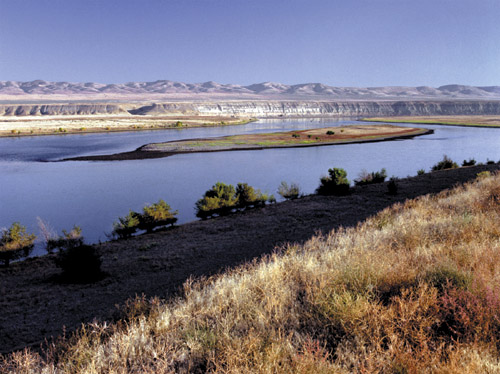Welcome to the Hanford Reach National Monument, a remarkable expanse of natural beauty and historical significance nestled in the heart of Washington State. As you journey through this vast landscape, let me take you back in time to uncover the stories that have shaped this unique location.
The Hanford Reach National Monument, established in 2000, spans over 195,000 acres and encapsulates the last free-flowing stretch of the mighty Columbia River in the United States. But its history stretches further back, playing a pivotal role in both natural and human history.
The area now known as the Hanford Reach has been inhabited for thousands of years by Indigenous peoples, including the Wanapum, Yakama, and Umatilla tribes. These tribes thrived along the river, relying on its abundant resources for sustenance. The Columbia River, often referred to as the ‘Great River of the West,’ served as a vital trade route, connecting various communities and facilitating cultural exchanges.
Fast forward to the 20th century, and the Hanford Reach became a crucial site in global history. During World War II, this area was selected as part of the Manhattan Project, the United States’ top-secret endeavor to develop the atomic bomb. The Hanford Site, established in 1943, was chosen for its remote location and access to hydroelectric power. It was here that the world’s first full-scale plutonium production reactor was built, contributing to the end of the war.
The significance of the Hanford Site extends beyond wartime. It marked a turning point in science and global politics, ushering in the nuclear age. The reactors operated for decades, producing plutonium for nuclear weapons during the Cold War until they were decommissioned in the late 1980s.
Today, the Hanford Reach National Monument stands as a testament to both its ecological importance and historical legacy. It’s a sanctuary for wildlife, home to elk, deer, eagles, and a vast array of plant species that thrive in its shrub-steppe ecosystem. The monument’s protection ensures that these natural habitats continue to flourish, offering a glimpse into the region’s ancient landscapes.
A visit to Hanford Reach wouldn’t be complete without acknowledging the scientists, engineers, and workers who played pivotal roles here. Among them, Leona Woods Marshall, a pioneering physicist, was part of the team that worked on the Manhattan Project at Hanford. Her contributions to nuclear physics were groundbreaking, and her legacy lives on through the continued exploration and stewardship of this land.
As you explore the trails and vistas of Hanford Reach, reflect on its dual identity as a cradle of nature and a forge of history. The monument’s preservation allows us to honor the past while embracing the present, ensuring that future generations can connect with this extraordinary place.
The Hanford Reach National Monument is not just a destination; it’s a living history, a natural wonder, and a reminder of the intricate tapestry of human and environmental evolution. Enjoy your journey through this remarkable landscape, where every corner holds a story waiting to be discovered.






